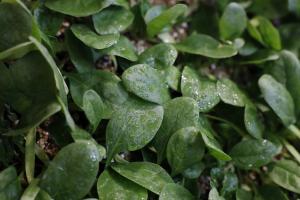Biocontrol and biostimulants: landscape and state of play of patents around the world

At the last edition of SITEVI in 2021, INPI and the Agri Sud-Ouest Innovation competition cluster presented the state of play of the development of biosolutions around the world through the prism of patented innovations. By drawing on the data relating to patents delivered on a global scale, the two partners cast an insightful spotlight on the various innovative projects that have seen the light of day in recent years.
A brief definition of biocontrol and biostimulants
Biocontrol brings together all the crop protection methods that favour the use of natural mechanisms and interactions between the different species and the natural environment to protect plants, and thus reduce the need for conventional crop protection products. These solutions can be split into four main segments: microorganisms, macro-organisms, chemical mediators, and natural substances.
Biostimulants meanwhile are substances whose aim is to stimulate the plant nutrition process, independently of the nutritional elements that they contain. The goal is to improve their different characteristics.
Focus on Agri Sud-Ouest Innovation The Agri Sud-Ouest Innovation network comprises 420 bodies, at the crossroads between the scientific and economical worlds. A genuine driver of French and European ecosystems, Agri Sud-Ouest is firmly established in Occitania and Nouvelle-Aquitaine and provides a multitude of opportunities for innovation, primarily in the agricultural and food sectors. |
A landscape of patented innovations in biosolutions

The patent landscape is an outstanding analytical tool in the furtherance of corporate strategies. Agri Sud-Ouest Innovation, in partnership with INPI, has studied the global panorama of all the patented innovations dealing with biosolutions. This initiative offers a chance to take the temperature of the market and better understand the innovation dynamic.
Interpreting the landscape
With 3.4 million filings in the world in 2021, patents offer an insightful snapshot of the reality of the market. ‘Landscaping” these patents makes for easier reading and helps to turn figures into words. It is also important in sourcing information on one’s competitors and knowing precisely what they do. More generally, it offers valuable information on company strategies.
Note from SITEVI All patents are published by the national and regional offices 18 months after their filing. |
Questions asked by entrepreneurs
Before getting started on an innovation project, companies should ask themselves several questions. Firstly, they should identify their competitors and find out about the inventions that they are in the process of developing. This helps to sketch out the first R&D trend. Next, another important question is “where can you find the technological solution you need?”
Another question is whether the idea is truly innovative: is it really a new idea? Is it part of a trend? Answering all these questions will help to clear up any doubts as to the potential of a project.
Landscape analysis
To analyse the biosolution market through the prism of patents, the first step was to define the scope concerned. 59,981 patent families were listed between 2005 and 2020 in the biocontrol and biostimulants domain:
- 33,094 families for biocides: products that repel or attract animals and plant growth regulators,
- 20 739 families for biochemistry, microorganisms or enzymes, culture media and mutation techniques,
- 3,964 families for organic fertilisers prepared using biological or biochemical processes,
- 2,184 families for organic chemistry and the synthesis of natural derivatives.
In these families, we can observe rapid annual growth in the number of filings since 2007 followed by a drop from 2018 onwards.
The biggest applicants in France
The landscaping exercise also enables us to spot the organisations that filed the most patents in the families in question. The top 5 private sector French firms are:
- Rhodia (16 families),
- UPL Limited (14 families),
- Agro Innovation (10 families),
- AMOEBA (8 families),
- Solvay (8 families).
Worldwide, the group Bayer Corp Science tops the list, with 1,403 families.
Countries concerned
In terms of the geographical zones covered by biosolutions patents, China appears to be ahead of the rest of the world. It is the country with the largest number of filings, with 36,066 patent families. A long way behind in second place is the USA with 6,176 families and Japan with 3,272. France only has 327 filings.
Public research
Public research covered 15,102 families between 2005 and 2020. On a global scale, it is mainly represented by Chinese universities (6,429 families) and, in France, by CNRS (34 families), INRAE (18) and INSERM (12). Filings have increased in number in the past five years, and today primarily relate to microorganisms, plant growth regulators and bioherbicides.
Limitations of landscaping
Landscaping patents from around the world contributesa lot of answers that can shed light on innovation in the biocontrol and biostimulants field. However, a country-by-country analysis is also interesting since patents do not function everywhere in the same way.
In the USA for example, the Supreme Court, ruled that “everything made by hand of man” can be patented.
Next, the cost of a patent can vary wildly from one country to another, and may therefore be a dissuasive factor. This, if a country records fewer patent filings, it may not necessarily be because it is less innovative: other obstacles may come into play.
Key takeaways
- Patent filings have seen continuous growth since 2005 and have increased strongly over the last ten consecutive years. In the past two years, the strong decline in filings from China has led to the curve flattening out.
- Academic research is particularly present, with 15,102 families filed. Two thirds of filings were done in the past five years, reflecting a recent increase in popularity.
- The biocontrol and biostimulants sector is highly competitive and, the main market players work in areas that are closely related to one another.
